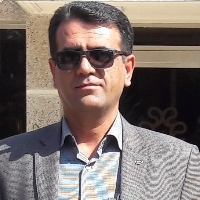The Relationship between Rural Economic Poverty and Rangelands Degradation The Case of Central District of Farsan County
Author(s):
Abstract:
Introduction
Based on the United Nations definition, fundamentally, poverty is the inability of getting choices and opportunities, a violation of human dignity. It means lack of basic capacity to participate effectively in society. It means not having enough to feed and clothe a family, not having a school or clinic to go to, not having the land on which to grow ones food or a job to earn ones living, not having access to credit. It means insecurity, powerlessness and exclusion of individuals, households and communities. It means susceptibility to violence, and it often implies living in marginal or fragile environments, without access to clean water or sanitation. On the other hand, in many developing countries where rangelands are a dominant land type and critically important in livelihoods of a significant portion of the population, severe rangeland degradation and/or conflicts over rangeland use can create significant social, economic, and environmental problems. Among all sustainable development challenges, poverty and rangeland degradation are two basic and important obstacles especially in Third World countries. These two factors are important not only because of their negative effects on achieving sustainable development, but also because they have an intensifying and interactive relationship with each other and threaten third world countries development and endanger the global environment as a serious crisis.Material &
Methods
The present study was carried out to investigate the relationship between rural poverty and rangelands degradation in central district of Farsan County. Survey research method with a pre-designed questionnaire was used to collect data from the study area. Face validity of the supposed questionnaire was verified by faculty staff of the Rural Development Department of Yasouj University. Also, the Cronbach's alpha coefficient as a criteria of the reliability of the questionnaire was calculated above 0.70 based on the data collected in a pilot study. Research population consisted of all household heads of the supposed study area that about 346 rural households were selected as research sample. Research questionnaire included 3 parts: the first one was about the measurement of poverty, second part was about the measurement of rangelands degradation and the final part was about demographic variables. The absolute poverty line is defined as the amount of income which according to cultural, social and economic aspects evaluated to be necessary to meet the minimum needs of individuals (such as food, clothing, housing, etc.), or at least conditions such as a minimum level of income, education, housing and so on. This method for determining the poverty line is called basic needs method. On the other hand, the relative poverty line is defined as a certain percentage of income or average income of the whole society in the form of a border or a certain percentage of the population whose income is lower than the Minimum. In this study, the relative poverty line was considered and to facilitate proper statistical analysis, both poverty and degradation scores were calculated and/ or computed for per capita.Discussion of Results &
Conclusions
The results showed that the majority of the respondents were between 41 to 50 years old (about 29.1%). Most of them were male, married and illiterate. Also, the average family size was 4.67. Most of them have a monthly income between 5 and 10 million Rials. The average household food expenditure was 5440000 Rials and 5890000 Rials for non-food Expenditure. In this research, in the studied region, the per-capita relative poverty line was calculated 1213000 Rials for the year 2014. The results also showed that there are statistically significant differences between poor and non-poor respondents based on their ages and education level. According to the findings, about 14 percent of the respondents were poor. The results also showed a high degree of rangelands degradation in the studied region. The average score for rangeland degradation was 3.27 in a continuum from 1 to 5. Moreover, according to the results of research, the average score of rangeland degradation by poor respondents was more than non- poor respondents while this difference was significant statistically at 0.001 level.Keywords:
Language:
Persian
Published:
Strategic Research on Social Problems in Iran, Volume:5 Issue: 4, 2017
Pages:
69 to 78
magiran.com/p1664736
دانلود و مطالعه متن این مقاله با یکی از روشهای زیر امکان پذیر است:
اشتراک شخصی
با عضویت و پرداخت آنلاین حق اشتراک یکساله به مبلغ 1,390,000ريال میتوانید 70 عنوان مطلب دانلود کنید!
اشتراک سازمانی
به کتابخانه دانشگاه یا محل کار خود پیشنهاد کنید تا اشتراک سازمانی این پایگاه را برای دسترسی نامحدود همه کاربران به متن مطالب تهیه نمایند!
توجه!
- حق عضویت دریافتی صرف حمایت از نشریات عضو و نگهداری، تکمیل و توسعه مگیران میشود.
- پرداخت حق اشتراک و دانلود مقالات اجازه بازنشر آن در سایر رسانههای چاپی و دیجیتال را به کاربر نمیدهد.
In order to view content subscription is required
Personal subscription
Subscribe magiran.com for 70 € euros via PayPal and download 70 articles during a year.
Organization subscription
Please contact us to subscribe your university or library for unlimited access!



